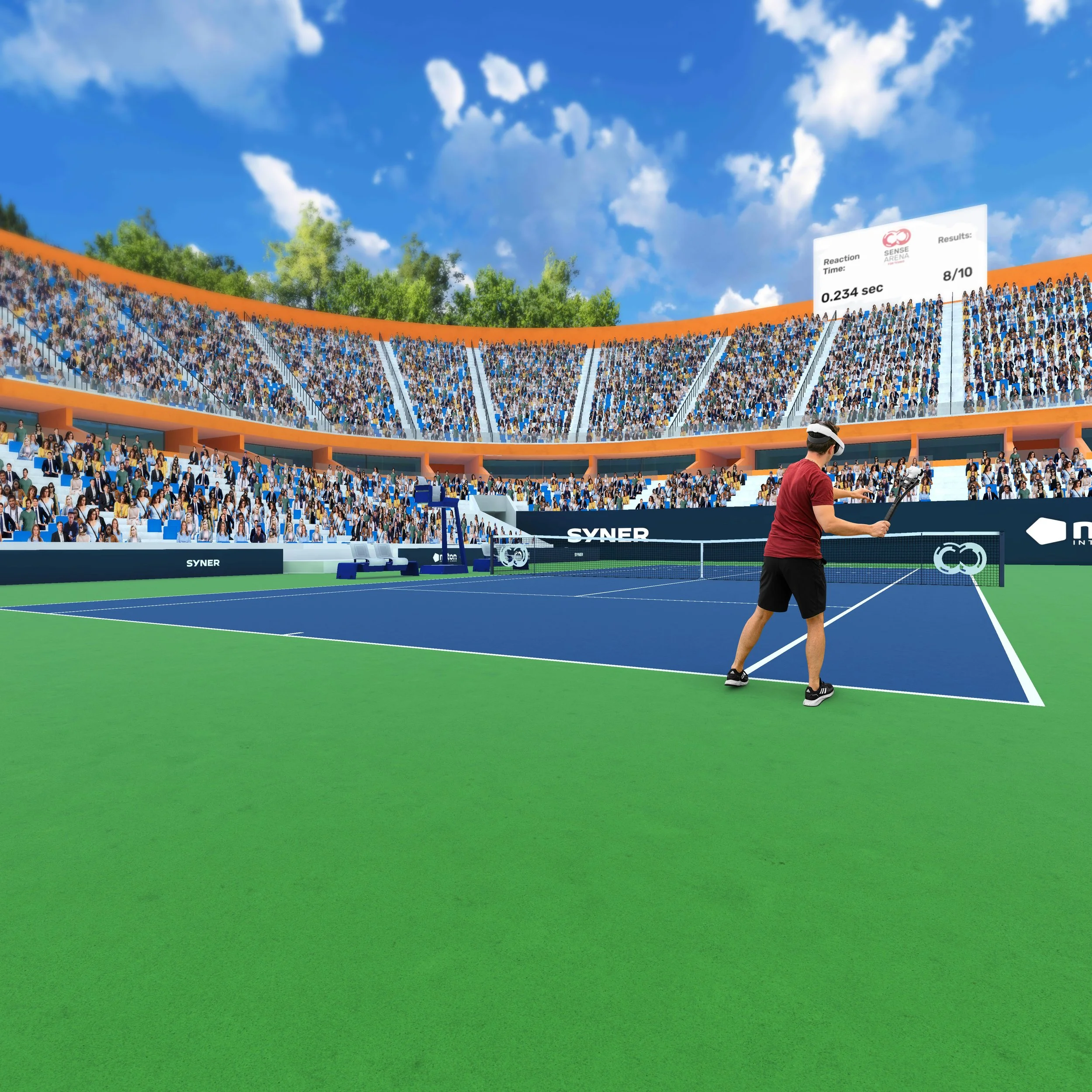PREPARATION SIMULATION
Can a VR tennis game unlock your IRL confidence?
I’ve always wanted a boxer’s ego going into tennis matches: unwavering self-belief and a sense that success is a formality. But unexpected situations can release my inner-saboteur: playing in front of crowds, matches in changeable weather, big serving lefties.
Sense Arena, the makers of a virtual reality tennis training tool, are convinced that they can help you prepare for — and overcome — all such eventualities. The kit, which includes an annual subscription, headset, two controllers and a haptic racket (which through electronics resistance unnervingly makes you feel you’re hitting a tennis ball) might set you back just shy of £600 but it enables you to be in over 100 different scenarios you could face in IRL settings.
Struggling with the wind? New to playing doubles on grass? Hate coming to the net, even though you know it’s winning you points? You can select all of these variables, then mould your game with a series of warm-ups, drills and competitions. Ahead of a singles match against a 6’5” lefty, on hard court (a surface I hate), I did a VR run-through using Sense Arena’s kit. Could it unlock some Ali-esque self-belief?
Set-Up
Crown yourself with the comfy, if slightly heavy, headset and insert a controller into the haptic racket. You’re asked to paint a small radius around yourself and identify any objects you might bump into, because this isn’t a static activity. Prepare to move and swing and get over the embarrassment of looking like a clueless airport marshall.
Déjà-Vu
Sports psychologists swear by positive visualisation. Sense Arena makes you feel rooted in a certain environment. My first VR warm-up exercise took me to a virtual hard court like the Arthur Ashe Stadium with the hum of a large crowd in the background. My real-time match won’t have a crowd that size, but the surface is exactly the same. The first few shots of my forehand drill were awful, with my timing all over the place, but I got better at reading the bounce and started to make cleaner contact. By the end I simulated combination plays that I then went on to try during my game.
Focus is key.
I next try a volley concentration drill. It’s 1-on-1 with my virtual opponent. Whilst at the net, two balls fly past my shoulder into my opponent’s court. In a move of outrageous skill, my VR rival hits both balls simultaneously and cleanly in different directions. I have to make a quick decision as to which ball I'm going to volley. The speed forces you to remember good technique: racket up, in front of the body, sharp footwork, punch. The aim is to consistently hit the ball into different target zones, but it’s made harder by the sound of planes overhead and noises of the crowd — things that distract me normally. You’re given concentration and efficiency scores after every virtual drill. If I lost focus and wasn’t happy with my score, I just repeated it until I knew I was ready to face the same on the proper court.
Physically prepared
Sense Arena recommends using the kit in 20 minute intervals. I try out different training exercises and drills before my match. It’s a serious workout. After my run-through I’d hit over 200 virtual tennis balls, so when I hit the real court, my movement already felt fluid. After 20 minutes, my eyes feel dry — I was concentrating so hard, I barely blinked.
So how did I fair.
I won, 7-6 6-4. Was I more warmed up before the warm up? Yes. Did I feel extra sharp? Yes. Did I feel more prepared for my first return? 100%. Can Sense Arena take credit for my win? No. That wouldn’t be fair on my previous coaches. But its ability to tailor 20-minutes of drills and match-play meant there were fewer surprises, I was less nervous and I entered float like a butterfly, sting like a bee territory.
Available on subscription $29 per month from Sensearena.com
Words: JULIAN CIRRONE


